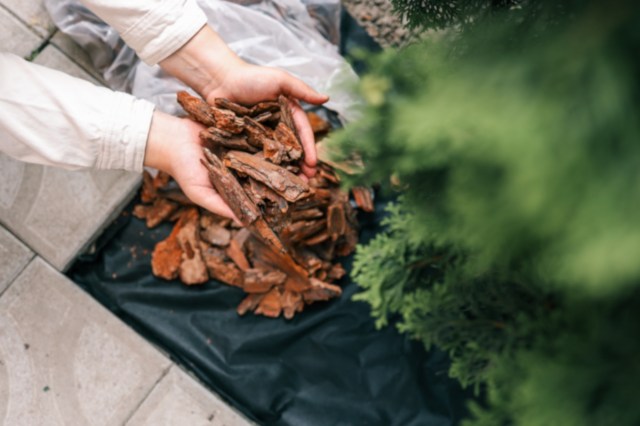Understanding the Risks of Landscaping Fabrics
Lawn makeovers offer a fantastic chance to revitalize your outdoor space. However, it’s essential to be mindful of certain practices that may seem beneficial at first but can lead to long-term issues. One such practice is the use of landscaping fabrics, which many homeowners mistakenly believe are necessary when adding mulch.
A homeowner recently shared their experience on a popular online forum, seeking advice on whether they should lay down weed cloth before applying mulch. The question sparked a lively discussion among users, who overwhelmingly advised against using landscaping fabric.
One user clearly stated, “The two do NOT go together.” They emphasized that mulch alone is sufficient and that adding fabric only complicates things. Another Redditor added, “Absolutely no weed fabric under mulch,” explaining that the goal is to let the mulch break down naturally into the soil.
The Hidden Dangers of Landscaping Fabrics
Landscaping fabrics, often referred to as weed cloths, are typically made from plastic materials. While they might seem like a good solution for preventing weeds, these products can end up causing more harm than good. Over time, the plastic breaks down and releases toxic microplastics into the soil, which can negatively affect both the environment and plant health.
Many gardeners have learned this lesson the hard way. They’ve faced the frustration of having to remove the fabric later, which can be a tedious and time-consuming task. Instead of solving the problem, these materials often create new ones.
Eco-Friendly Alternatives to Landscaping Fabrics
Fortunately, there are several environmentally friendly alternatives to landscaping fabrics that can effectively suppress weeds without the drawbacks. One of the best options is planting native plants. These plants are well-suited to the local climate and soil conditions, making them resilient and low-maintenance.
Native plants not only help in controlling weeds but also add vibrant colors and beauty to your yard. Switching to a native plant lawn can also save you money in the long run. Since these plants are adapted to the local environment, they require less water, fertilizer, and pesticides to thrive. Homeowners can save up to $225 on water and $100 on fertilizers and pesticides each year.
Tips from the Community
Redditors continued to share their experiences and recommendations, reinforcing the idea that landscaping fabrics are not the best choice. One user strongly advised against using weed cloth, stating, “It doesn’t last long and it’s so annoying to remove.” Another suggested using cardboard as an alternative, noting that it decomposes and suffocates most weeds.
These discussions highlight the importance of choosing sustainable and effective methods for maintaining a healthy lawn. By avoiding harmful materials and embracing natural solutions, homeowners can create beautiful, eco-friendly outdoor spaces.
Final Thoughts
While it’s tempting to reach for quick fixes, it’s crucial to consider the long-term impact of our choices. Landscaping fabrics may seem like a convenient option, but they often lead to more problems than they solve. By opting for natural alternatives like native plants and compost, we can protect our environment while enjoying a lush, vibrant yard.







